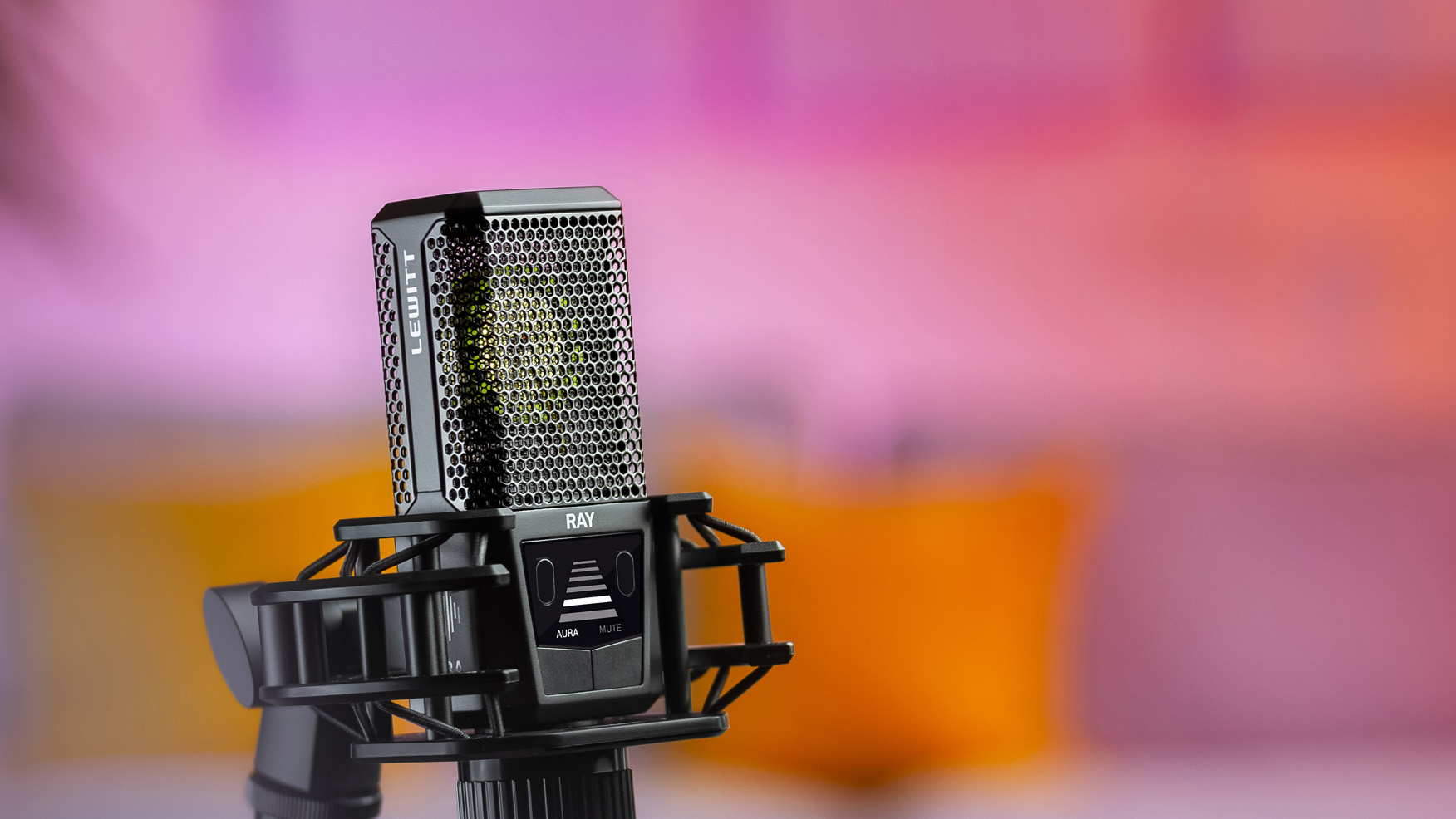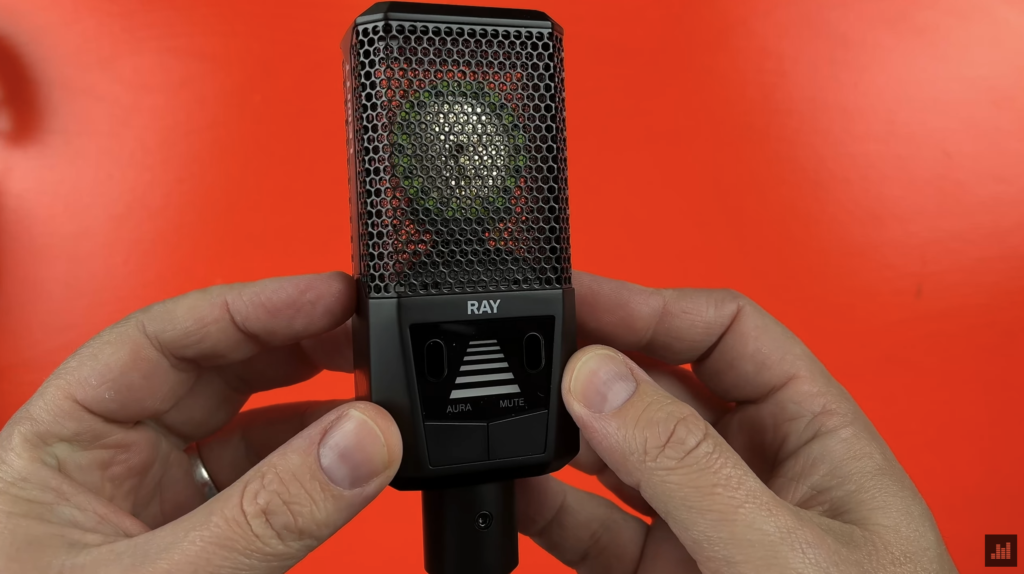
The Lewitt RAY condenser microphone shoots lasers that let it know how close or far away you are from it, and adjusts its recording level based on your distance.
On paper it sounds amazing (and crazy), but does it actually work?
The Lewitt RAY condenser microphone is available for around £300 pounds or $350 and for that price you’re not only receiving a great quality condenser microphone, you’re also getting access to a feature unique to this microphone; sensor based Aura technology.
Lewitt describe this as autofocus for your voice – it’s essentially proximity based automatic gain adjustment.
What’s in the Box?
In the Lewitt RAY’s box you will find:
- Documents
- A carry pouch
- The RAY microphone itself
- A foam windshield
- A metal pop filter
- A shock mount
- Cable tie
The Lewitt RAY is made entirely of metal. The build quality is absolutely fantastic. The microphone has a reassuring amount of heft to it and the two buttons on the front of the microphone are satisfyingly clicky too.
The foam windshield is… a foam windshield, though the way it’s been shaped to fit onto the RAY microphone is a nice touch. The shockmount is of a similar high quality to the microphone itself. It’s made from metal and is surprisingly weighty.
With the RAY microphone attached, the metal pop filter attaches to the shock mount magnetically, and is also really sturdy.
I don’t think i’ve come across a microphone that gives as good of a first impression as this one.
Specifications
Lewitt know a thing or two about creating great quality condenser microphones. Before diving into the headline features of the RAY, its important to understand that it also serves as a very good all round studio microphone.
Lewitt describe the RAY as providing ‘Record-Ready sound’. It features the following specs:
- 1-inch true condenser studio capsule
- Cardioid polar pattern with effective rear rejection
- 8 dB(A) of self-noise
- Max SPL of 131 dBSPL
- Gold-plated 3-pin XLR connector
- 100% analog signal path


Aura Technology
Can this microphone actually tell how close or far away from the microphone you are and somehow keep your recording level consistent?
Lewitt explain how their Aura technology works best:
“AURA compensates for your signal’s tonal changes with a filter that reacts dynamically according to distance. This process balances your signal sound and compensates for the proximity effect.
It also adjusts the volume to keep it consistent so you stay in focus when moving away from the microphone and don’t distort your signal when you get very close.
These adjustments happen in real-time via a microcontroller that receives data digitally from the AURA sensor, but your audio signal stays 100% analog throughout.”
In practice, I was genuinely surprised by how well this feature works. And it doesn’t JUST work with voice. As long as there is nothing obstructing the microphone’s ‘line of sight’, the RAY’s Aura tech will work with any acoustic instrument.
The Ray also includes a mute by distance feature.
Simply hold the Mute button on the microphone to set a distance using the display.
When you move out of the range you’ve set your audio will be muted. A simple idea that is implemented very well and something that streamers or podcasters in particular will find incredibly handy.
Mind blowing Aura tech and auto-muting aside, the Lewitt RAY is also an incredibly good condenser microphone.
This is essentially a Lewitt LCT 440 Pure with additional features added. The LCT 440 Pure is one of the best microphones in its price range, so even if you don’t use this microphone’s fancy bells and whistles all of the time, you’ll still be capturing great sounding recordings.
Worth It?
You are getting a whole lot of microphone for your money here.
If you dabble in a spot of live streaming alongside your music production stuff, the mute by distance feature and Aura tech in this microphone will prove really valuable to you I think. Even if you just plan on using this mic to record live instruments or vocals, being able to ensure that you’ll capture a consistant level regardless of mic technique or instrument proximity is a huge plus.
I really like this microphone, not just because of its cool and useful features but because it also just captures amazing sounding audio.
Disclaimer- Lewitt provided me with a RAY microphone for the purposes of this review, but this isn’t a sponsored post and Lewitt have had no input in the content of this article. They are seeing it for the first time at the same time you are.
This review contains affiliate links. Find out more about them here.



